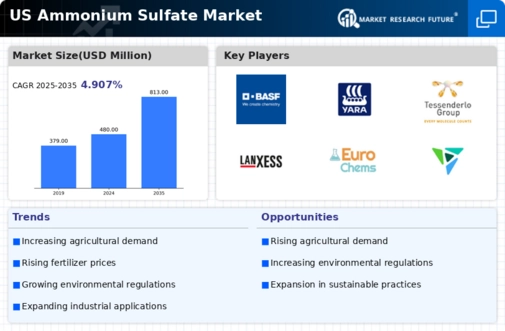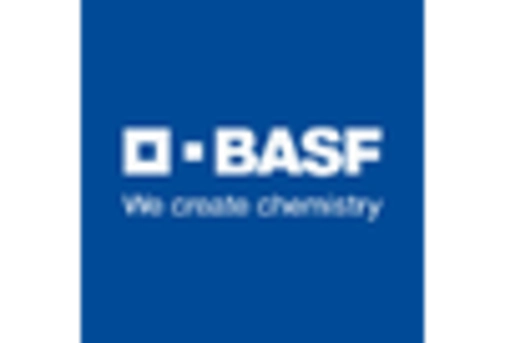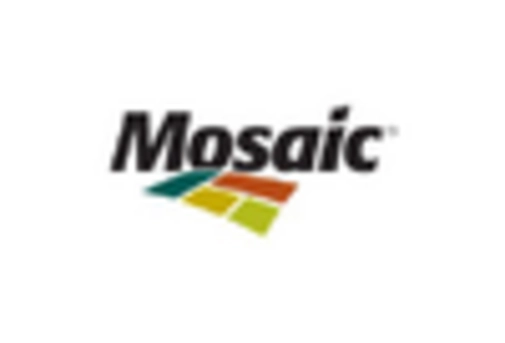The ammonium sulphate market exhibits a competitive landscape characterized by a blend of established players and emerging entities, driven by increasing agricultural demand and the need for sustainable fertilizers. Key players such as Nutrien Ltd (CA), The Mosaic Company (US), and CF Industries Holdings, Inc. (US) are strategically positioned to leverage their extensive distribution networks and production capabilities. Nutrien Ltd (CA) focuses on innovation in nutrient management solutions, while The Mosaic Company (US) emphasizes its commitment to sustainable practices, thereby shaping a competitive environment that prioritizes both efficiency and environmental stewardship.
In terms of business tactics, companies are increasingly localizing manufacturing to reduce transportation costs and enhance supply chain resilience. The market structure appears moderately fragmented, with a few dominant players exerting considerable influence. This fragmentation allows for niche players to emerge, yet the collective strength of major companies like Yara North America, Inc. (US) and K+S North America, Inc. (US) remains significant, as they continue to optimize their operations and expand their market reach.
In November 2025, Yara North America, Inc. (US) announced a partnership with a leading agricultural technology firm to develop precision farming solutions that integrate ammonium sulphate applications. This strategic move is likely to enhance Yara's product offerings, aligning with the growing trend towards data-driven agriculture and sustainability. By leveraging technology, Yara aims to provide farmers with tailored solutions that optimize nutrient use efficiency, thereby potentially increasing crop yields and reducing environmental impact.
In October 2025, CF Industries Holdings, Inc. (US) unveiled plans to expand its production capacity for ammonium sulphate at its Louisiana facility. This expansion is indicative of CF Industries' commitment to meeting the rising demand for nitrogen-based fertilizers in the U.S. market. The increased capacity is expected to bolster the company's competitive position, allowing it to respond more effectively to market fluctuations and customer needs.
In September 2025, The Mosaic Company (US) launched a new line of ammonium sulphate products designed specifically for specialty crops. This initiative reflects Mosaic's strategic focus on diversifying its product portfolio to cater to niche markets. By addressing the specific nutrient requirements of specialty crops, Mosaic is likely to enhance its market share and strengthen customer loyalty in a competitive landscape.
As of December 2025, the ammonium sulphate market is witnessing trends that emphasize digitalization, sustainability, and the integration of artificial intelligence in agricultural practices. Strategic alliances among key players are shaping the competitive landscape, fostering innovation and collaboration. The shift from price-based competition to a focus on technological advancements and supply chain reliability is becoming increasingly evident. Companies that prioritize innovation and sustainable practices are likely to differentiate themselves in this evolving market.





















Leave a Comment